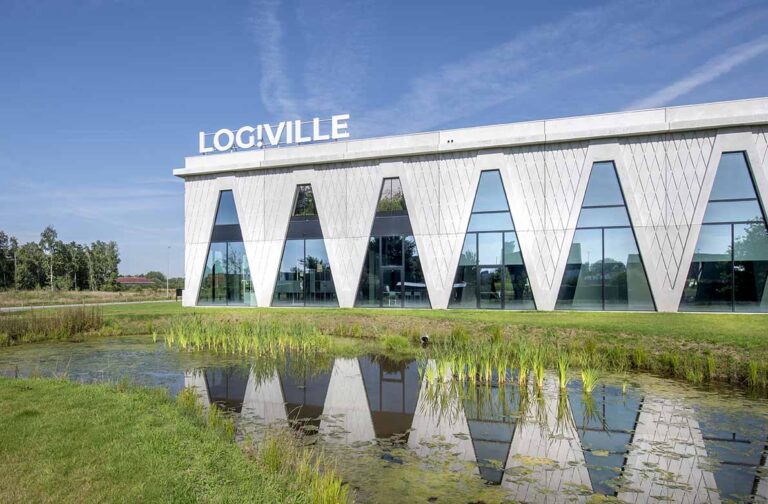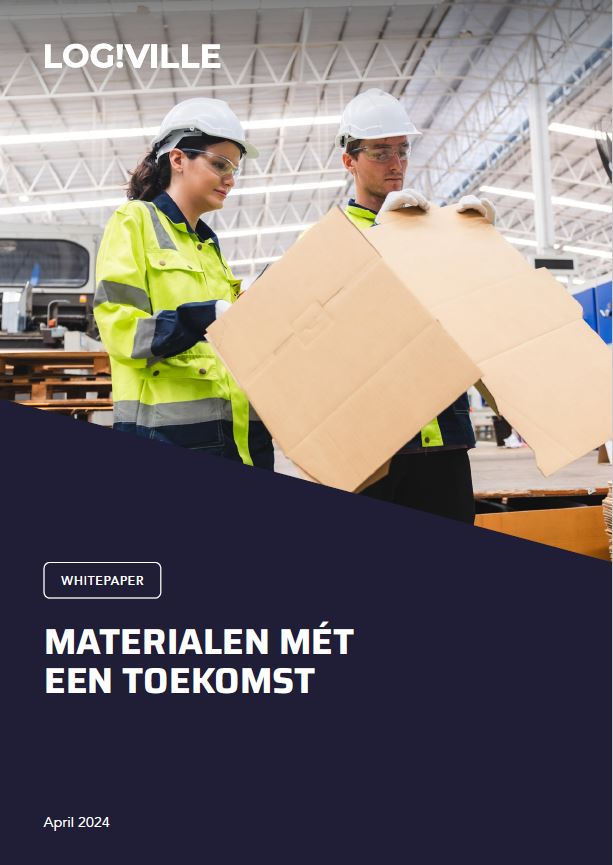Arne Westerman (Goodyear): ‘Truck tyres are increasingly integrating technologies’

Goodyear Belgium has been an Innovation Partner of Log!Ville since a few weeks. Unexpected from a tyre manufacture at first glance, but truck tyres are integrating increasingly more technology. This is not only due to efforts for improving operational efficiency, safety and sustainability, but also to comply with stricter regulations and environmental requirements. Arne Westerman, Head of Sales Replacement Truck BeLux, explains how Goodyear Total Mobility fits into the Log!Ville picture.
What is Goodyear Total Mobility?
Goodyear Total Mobility is an integrated suite of fleet management solutions designed specifically for truck fleets and transport companies. This programme came about because the market is evolving very rapidly, partly due to European environmental and safety regulations. I am referring in particular to the European Green Deal and Safety Directive.
Does the Green Deal have an impact on the tyre sector?
Sure. Trucks, buses and coaches account for 6% of total C02 emissions in Europe. EU legislation provides for them to reduce their emissions by 15% by 2025 and 45% by 2030. Tyres will also have to play their part in that reduction, including through improved rolling resistance. In addition, the Euro7 standards – effective from July 2031 – also play a profound role because they go beyond regulating emissions at the tailpipe. They also cover, for example, particulate matter emissions from the brakes or those from micro-plastics from the tyres. Meeting the new requirements will require a lot of innovative technology.
Another impact of the Green Deal is the electrification of trucks. Battery-electric trucks or fuel-cell trucks are heavier than diesel trucks. This will have an impact on tyre load capacity.
The Safety Directive also implies new technologies in the tyre sector. Why?
It has been in force since July 2022 for new vehicle types and from July 2024 for all new vehicles. Among other things, it provides smart speed assistance, drowsiness warning systems, facilitating the installation of alcohol locks, and so on. One such safety feature is the requirement to fit an accurate tyre pressure monitoring system (TPMS). This should immediately alert the driver in case of pressure loss.
This obligation also offers opportunities, as we show at Log!Ville. We use the data from the TPMS more interactively and for broader applications by also forwarding it to the truck fleet back office. For instance, we have worked out an algorithm that can work predictively from this data.
We mount a sensor in the rim that is not only connected to the TCU (Telematic Control Unit) in the cabin, but also to our server. Data on temperature and voltage are received virtually in real time and processed with this algorithm so that we can predict a leak. This way, we avoid downtime and prevent breakdowns. This data also allows us to reduce consumption (and CO2 emissions) and extend the life of tyres by keeping the pressure optimal at all times.
Isn’t that future proof? TPMS will not be mandatory for new trucks until July 2024. It will be years before all truck tyres are equipped with a sensor.
Exactly. A truck or tractor generally lasts 6-8 years and a trailer 12-15 years. So it will be a long time before all vehicles within a fleet are factory-equipped with a TPMS. In addition, the Goodyear TPMS is also more performant than ex-factory systems. Our system is predictive: slow leaks are indicated so that one can intervene in time. By the way, it’s not only the driver who has insight into possible problems: with a handy app, the fleet manager or the back office can also monitor everything.
We have also developed DrivePoint, which we will also show at Log!Ville. This is a simpler system, where we mount sensors on the valve. At the entrance or exit of the truck fleet area, we place two towers that read the data from those sensors when a truck drives between them. Those data are processed in our platform. They display the information at that moment. The more frequently they are read, the better. That is why DrivePoint is aimed at fleets whose trucks return to base once or several times a day: garbage trucks, construction vehicles, distribution trucks, etc.
What else do you suggest on Log!Ville?
You cannot look past it: Checkpoint. This is an installation embedded in the ground that has several functions. This platform scans the tread of tyres to determine tread depth, pressure and so on. It also measures the load. The system works automatically: the truck and tyres are recognised by RFID tags or ANPR cameras. This data can also be shared with our platform to send out alerts or track tyres more frequently.
We also show tyres specifically designed for electric trucks. As I indicated, the heavier weight means the load per axle is greater. But there is more. The transmission is much more direct, which has an impact on the tyre profile.
What motivated you to partner with Log!Ville?
The tyre market, technology, and regulations are changing rapidly. This brings challenges, but also opportunities from truck fleet operators. That message is difficult to get across, although we notice that awareness in the sector is changing relatively strongly.
Eef Vanrusselt, our marketing manager, had attended a seminar at Log!Ville. She was triggered by the concept, with the right combination of technology and innovation. So we decided to present our solutions there to professional visitors. Our booth is smaller in scale than a stand at a trade fair, but we can convey information there more professionally and to a more targeted audience.
Besides providing information, we also want to get feedback from visitors via Log!Ville. How does the market view these innovations? This feedback should enable us to further develop the right products and innovations for the future.



